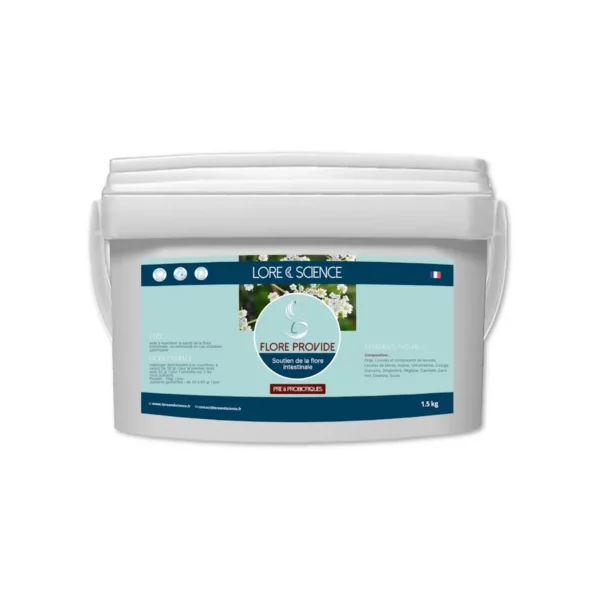Among the conditions that can affect horses, navicular syndrome is a major concern for owners and riders alike. Lore & Science tells you all about navicular syndrome: its causes, its symptoms, and the different approaches to preventing and treating it.
What is navicular syndrome in horses?
Navicular syndrome, medically known as navicular disease syndrome, is a debilitating condition that frequently affects horses' feet. This insidious disease targets a specific area of the foot, located around the navicular, a small boat-shaped bone nestled inside the horse's foot. The manifestations of this disease can be varied, but are often characterized by inflammation, degeneration or lesions in the surrounding structures of the foot, resulting in great distress for the equines.
The exact causes of navicular syndrome sometimes remain obscure, and it seems that several factors are involved, including genetic, environmental and management factors. It is worth noting that certain breeds of horse have a greater predisposition to developing this condition, notably thoroughbreds and sporting breeds. Trail horses, whose activities place excessive stress on their forelimbs, are also at greater risk of developing navicular syndrome.
What are the symptoms of navicular syndrome?
The symptoms of navicular syndrome, often insidious and progressive, can vary from horse to horse, but they generally manifest themselves through a range of characteristic clinical signs. Among the most commonly observed symptoms, lameness is one of the most obvious. Horses with this condition tend to limp intermittently, often putting more weight on one of their forelimbs. Lameness may be more pronounced on hard or uneven ground.
Careful observation of your pet during exercise can also help you distinguish early symptoms. For example, a shorter stride or difficulty in fully extending the affected leg, which can lead to a jerky gait. Overall, horses with this condition may become reluctant to exercise, especially as their pain worsens. They may show signs of annoyance or refusal to jump or move quickly. Your horse or mare may also be less flexible and agile in its movements due to the joint stiffness caused by the syndrome.
In addition, a regular examination of your horse's feet and physiognomy can reveal warning signs. Typically, some horses develop abnormal musculature around their neck, particularly above the mane, as an attempt to compensate for pain in their forelegs. We also recommend regular examination and palpation of your horse's forelegs. Indeed, the area of the foot affected by navicular syndrome may become warm to the touch, due to inflammation of the surrounding structures.
Finally, any abnormal change in your horse's behavior, such as signs of lethargy or unexplained irritability, should alert you to his health. Of course, it's essential to note that these symptoms can vary in intensity, and that a horse suffering from navicular syndrome doesn't necessarily present all these signs at the same time. So, if you have any concerns, always consult your veterinarian for a precise, personalized diagnosis.
Can equine navicular syndrome be prevented?
As with many conditions, a healthy lifestyle and careful attention to your horse's environment can help prevent navicular syndrome. If your horse or mare seems predisposed to this syndrome, you can help by implementing a few simple elements. Make sure your horse is properly shod, taking into account its anatomy and use. Similarly, avoid subjecting your horse to excessive loads, especially on hard surfaces.
In addition, a balanced diet that promotes hoof health is essential. You can also support a navicular horse's health with dietary and herbal supplements such as Bones Support, which promotes and strengthens bone production and solidity in horses.
Prevention and early detection of symptoms is the most effective way to help your horse cope with navicular syndrome. So schedule regular check-ups with your vet to detect any problems as soon as they appear.
How to treat a navicular horse
If you suspect your horse is showing symptoms of navicular syndrome, it's imperative to consult a veterinarian specializing in equine medicine. Diagnosis of this condition is based on a thorough clinical examination, X-rays, and sometimes ultrasound scans to assess the internal structures of the foot. Treatment of navicular syndrome in horses is a complex process designed to relieve pain, improve the animal's quality of life and prolong its career, where appropriate. The choice of treatment will depend on the severity of the disease, the horse's age and activity level, and the resources available to the owner.
Often, one of the first steps in treatment is to offer the horse complete or partial rest. Reducing physical activity, especially high-intensity exercise, helps relieve pressure on the affected foot structures. Sometimes, as a complement, specially designed shoes, such as orthopedic shoes, can be used to distribute the load more evenly on the horse's foot and reduce pressure on the navicular.
In terms of treatment, anti-inflammatory drugs can be prescribed by a veterinarian to relieve pain and inflammation. They are often administered during periods of crisis or continuously, depending on the severity of the disease. In some cases, intra-articular injections of corticosteroids or other substances are recommended to reduce inflammation in the foot joint and relieve pain.
To support the healing of a navicular horse, it is also possible to give your horse nutritional supplements based on fresh medicinal plants to fortify the horse's bones. Osteo Force uses phytotherapy to stimulate bone cell production. Mineral deficiencies are the main cause of bone demineralization.
Finally, physiotherapy and other complementary therapies can be used to improve mobility, strengthen muscles and promote the horse's recovery. In severe cases, or when other treatments fail to bring relief, surgery may be considered. This may include denervation of the foot to block pain transmission, or more invasive procedures to repair lesions.
It is crucial to note that treatment of navicular syndrome is often a long-term process and may require ongoing management by the owner and veterinary team. Regular follow-up with a veterinarian specialized in equine medicine is essential to assess disease progression and adjust the treatment plan accordingly.
Thus, navicular syndrome is a delicate condition that can affect the health and performance of horses. With proper management, appropriate treatment and close collaboration between owner and veterinarian, it is possible to improve the quality of life of horses with this condition, enabling them to lead comfortable, active lives.
Share your experience or questions with us in the comments ↓


















